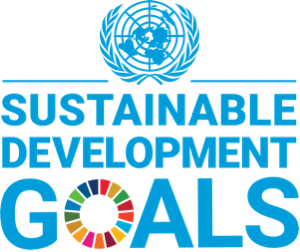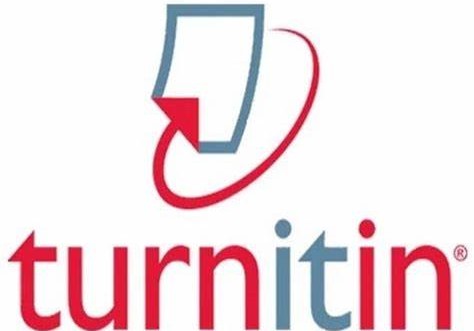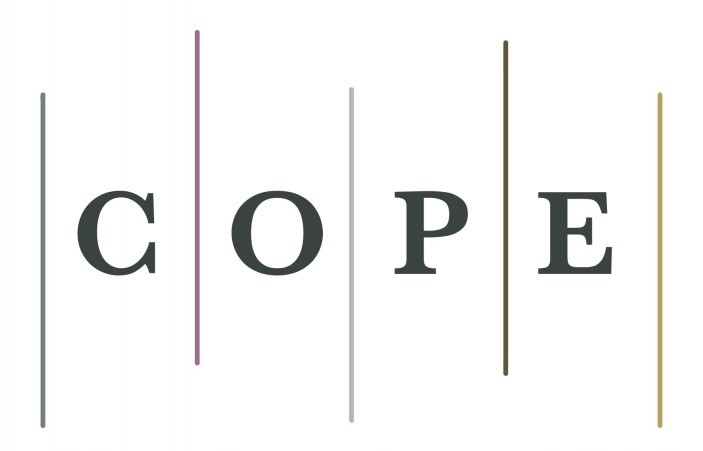Evaluation of Automotive Parts Suppliers through Ordinal Priority Approach and TOPSIS
DOI:
https://doi.org/10.52812/msbd.37Keywords:
Ordinal Priority Approach , Multiple Criteria Decision Analysis, TOPSIS, supplier selectionAbstract
The problem of supplier selection is an important concern for all businesses. Also, as environmental concerns are mounting and socio-economic crises are increasing worldwide, the need for resilient and environment-friendly suppliers is aggravating. Companies are under tremendous pressure to redefine their business practices and operations to achieve sustainability goals while being resilient. The study aims to evaluate the Chinese automotive parts suppliers based on 'gresilience' (green and resilient) criteria. The suppliers are evaluated using the Ordinal Priority Approach (OPA) and TOPSIS models. Also, it is the first time the TOPSIS model has been executed on the OPA-based criteria weights. The results from the two methods were mostly consistent. However, the OPA is flexible and can produce ranking under different assumptions.
References
Abdel-Basset, M., Mohamed, M., Abdel-Monem, A., & Elfattah, M. A. (2022). New extension of ordinal priority approach for multiple attribute decision-making problems: design and analysis. Complex & Intelligent Systems, 1-16. https://doi.org/10.1007/s40747-022-00721-w
Ahi, P., & Searcy, C. (2015). An analysis of metrics used to measure performance in green and sustainable supply chains. Journal of Cleaner Production, 86, 360-377. https://doi.org/10.1016/j.jclepro.2014.08.005
Ataei, Y., Mahmoudi, A., Feylizadeh, M. R., & Li, D. F. (2020). Ordinal priority approach (OPA) in multiple attribute decision-making. Applied Soft Computing, 86, 105893. https://doi.org/10.1016/j.asoc.2019.105893
Beamon, B. M. (1999). Designing the green supply chain. Logistics Information Management, 12(4), 332-342. https://doi.org/10.1108/09576059910284159
Behzadi, G., O’Sullivan, M. J., & Olsen, T. L. (2020). On metrics for supply chain resilience. European Journal of Operational Research, 287(1), 145-158. https://doi.org/10.1016/j.ejor.2020.04.040
Betti, F., & Ni, J. (2020). How China can rebuild global supply chain resilience after COVID-19. In World Economic Forum. Retrieved from: https://www.weforum.org/agenda/2020/03/coronavirus-and-global-supply-chains/
Brandon‐Jones, E., Squire, B., Autry, C. W., & Petersen, K. J. (2014). A contingent resource‐based perspective of supply chain resilience and robustness. Journal of Supply Chain Management, 50(3), 55-73. https://doi.org/10.1111/jscm.12050
Darnall, N., Jolley, G. J., & Handfield, R. (2008). Environmental management systems and green supply chain management: complements for sustainability? Business strategy and the Environment, 17(1), 30-45. https://doi.org/10.1002/bse.557
Davis-Sramek, B., Robinson, J. L., Darby, J. L., & Thomas, R. W. (2020). Exploring the differential roles of environmental and social sustainability in carrier selection decisions. International Journal of Production Economics, 227, 107660. https://doi.org/10.1016/j.ijpe.2020.107660
Fahimnia, B., Jabbarzadeh, A., & Sarkis, J. (2018). Greening versus resilience: A supply chain design perspective. Transportation Research Part E: Logistics and Transportation Review, 119, 129-148. https://doi.org/10.1016/j.tre.2018.09.005
Gan, J., Zhong, S., Liu, S., & Yang, D. (2019). Resilient supplier selection based on fuzzy BWM and GMO-RTOPSIS under supply chain environment. Discrete Dynamics in Nature and Society, 2019. https://doi.org/10.1155/2019/2456260
Giannakis, M., & Papadopoulos, T. (2016). Supply chain sustainability: A risk management approach. International Journal of Production Economics, 171, 455-470. https://doi.org/10.1016/j.ijpe.2015.06.032
Govindan, K., Rajendran, S., Sarkis, J., & Murugesan, P. (2015). Multi-criteria decision-making approaches for green supplier evaluation and selection: a literature review. Journal of Cleaner Production, 98, 66-83. https://doi.org/10.1016/j.jclepro.2013.06.046
Hasan, M. M., Jiang, D., Ullah, A. S., & Noor-E-Alam, M. (2020). Resilient supplier selection in logistics 4.0 with heterogeneous information. Expert Systems with Applications, 139, 112799. https://doi.org/10.1016/j.eswa.2019.07.016
Holling, C. S. (1973). Resilience and stability of ecological systems. Annual Review of Ecology and Systematics, 4(1), 1-23. https://doi.org/10.1146/annurev.es.04.110173.000245
Hosseini, S., & Al Khaled, A. (2019). A hybrid ensemble and AHP approach for resilient supplier selection. Journal of Intelligent Manufacturing, 30(1), 207-228. https://doi.org/10.1007/s10845-016-1241-y
Hosseini, S., Morshedlou, N., Ivanov, D., Sarder, M. D., Barker, K., & Al Khaled, A. (2019). Resilient supplier selection and optimal order allocation under disruption risks. International Journal of Production Economics, 213, 124-137. https://doi.org/10.1016/j.ijpe.2019.03.018
Humphreys, P. K., Wong, Y. K., & Chan, F. T. S. (2003). Integrating environmental criteria into the supplier selection process. Journal of Materials Processing Technology, 138(1-3), 349-356. https://doi.org/10.1016/S0924-0136(03)00097-9
Hwang, C.-L., & Yoon, K. (1981). Multiple Attribute Decision Making Methods and Applications: A State-of-the-Art Survey. New York: Springer.
Ikram, M., Sroufe, R., & Zhang, Q. (2020). Prioritizing and overcoming barriers to integrated management system (IMS) implementation using AHP and G-TOPSIS. Journal of Cleaner Production, 254, 120121. https://doi.org/10.1016/j.jclepro.2020.120121
Ivanov, D. (2018). Revealing interfaces of supply chain resilience and sustainability: a simulation study. International Journal of Production Research, 56(10), 3507-3523. https://doi.org/10.1080/00207543.2017.1343507
Ivanov, D., & Sokolov, B. (2013). Control and system-theoretic identification of the supply chain dynamics domain for planning, analysis, and adaptation of performance under uncertainty. European Journal of Operational Research, 224(2), 313-323. https://doi.org/10.1016/j.ejor.2012.08.021
Ivanov, D., Dolgui, A., Sokolov, B., & Ivanova, M. (2017). Literature review on disruption recovery in the supply chain. International Journal of Production Research, 55(20), 6158-6174. https://doi.org/10.1080/00207543.2017.1330572
James, A. T., Vaidya, D., Sodawala, M., & Verma, S. (2021). Selection of bus chassis for large fleet operators in India: An AHP-TOPSIS approach. Expert Systems with Applications, 186, 115760 https://doi.org/10.1016/j.eswa.2021.115760
Kannan, D., Khodaverdi, R., Olfat, L., Jafarian, A., & Diabat, A. (2013). Integrated fuzzy multi-criteria decision-making method and multi-objective programming approach for supplier selection and order allocation in a green supply chain. Journal of Cleaner Production, 47, 355-367. https://doi.org/10.1016/j.jclepro.2013.02.010
Kaul, A., & Bhattacharjee, A. (2022). Performance Evaluation of Lean-Green Healthcare Manufacturing Plants: A Fuzzy TOPSIS Approach. In Lean and Green Manufacturing (pp. 45-61). Springer, Singapore. https://doi.org/10.1007/978-981-16-5551-7_3
Konys, A. (2019). Green supplier selection criteria: from a literature review to a comprehensive knowledge base. Sustainability, 11(15), 4208. https://doi.org/10.3390/su11154208
Laari, S., Töyli, J., & Ojala, L. (2018). The effect of a competitive strategy and green supply chain management on the financial and environmental performance of logistics service providers. Business Strategy and the Environment, 27(7), 872-883. https://doi.org/10.1002/bse.2038
Lee, A. H., Kang, H. Y., Hsu, C. F., & Hung, H. C. (2009). A green supplier selection model for the high-tech industry. Expert systems with applications, 36(4), 7917-7927. https://doi.org/10.1016/j.eswa.2008.11.052
Liu, X., Zhou, X., Zhu, B., He, K., & Wang, P. (2019). Measuring the maturity of the carbon market in China: An entropy-based TOPSIS approach. Journal of Cleaner Production, 229, 94-103. https://doi.org/10.1016/j.jclepro.2019.04.380
Mahmoudi, A., & Javed, S.A. (2021). Performance Evaluation of Construction Sub-contractors using Ordinal Priority Approach. Evaluation and Program Planning, 91, 102022. https://doi.org/10.1016/j.evalprogplan.2021.102022
Mahmoudi, A., Abbasi, M., & Deng, X. (2021c). Evaluating the Performance of the Suppliers Using Hybrid DEA-OPA Model: A Sustainable Development Perspective. Group Decision and Negotiation, 31, 335–362. https://doi.org/10.1007/s10726-021-09770-x
Mahmoudi, A., Abbasi, M., & Deng, X. (2022). A novel project portfolio selection framework towards organizational resilience: Robust Ordinal Priority Approach. Expert Systems With Applications, 188, 116067. https://doi.org/10.1016/j.eswa.2021.116067
Mahmoudi, A., Deng, X., Javed, S. A., & Yuan, J. (2020). Large-Scale Multiple Criteria Decision-Making with Missing Values: Project Selection through TOPSIS-OPA. Journal of Ambient Intelligence and Humanized Computing, 12, 9341–9362. https://doi.org/10.1007/s12652-020-02649-w
Mahmoudi, A., Deng, X., Javed, S. A., & Zhang, N. (2021b). Sustainable Supplier Selection in Megaprojects through Grey Ordinal Priority Approach. Business Strategy and The Environment, 30, 318-339. https://doi.org/10.1002/bse.2623
Mahmoudi, A., Javed, S. A., & Mardani, A. (2021a). Gresilient supplier selection through fuzzy ordinal priority approach: decision-making in the post-COVID era. Operations Management Research, 1-25. https://doi.org/10.1007/s12063-021-00178-z
McKenzie, B. (2020). Beyond COVID-19: supply chain resilience holds key to recovery. Retrieved, 24, 2020. https://www.bakermckenzie.com/en/insight/publications/2020/04/beyond-covid-19-supply-chain
Mohammed, A., Harris, I., Soroka, A., Naim, M., Ramjaun, T., & Yazdani, M. (2021). Gresilient supplier assessment and order allocation planning. Annals of Operations Research, 296(1), 335-362. https://doi.org/10.1007/s10479-020-03611-x
Nawaz, M., Javed, S., Shah, S. M. H., Mustafa, M., Unsa, & Namatullah, A. (2021). Conceptualizing Supplier Work Passion in light of the Zigarmi's Framework. Management Science and Business Decisions, 1(1), 44-51. https://doi.org/10.52812/msbd.7
Nazari, M. A., Aslani, A., & Ghasempour, R. (2018). Analysis of solar farm site selection based on the TOPSIS approach. International Journal of Social Ecology and Sustainable Development, 9(1), 12-25. https://doi.org/10.4018/IJSESD.2018010102
Noci, G. (1997). Designing 'green vendor rating systems for the assessment of a supplier's environmental performance. European Journal of Purchasing & Supply Management, 3(2), 103-114. https://doi.org/10.1016/S0969-7012(96)00021-4
Pamucar, D., Deveci, M., Gokasar, I., Martínez, L., & Köppen, M. (2022). Prioritizing Transport Planning Strategies for Freight Companies Towards Zero Carbon Emission Using Ordinal Priority Approach. Computers & Industrial Engineering, 108259. https://doi.org/10.1016/j.cie.2022.108259
Ponomarov, S. Y., & Holcomb, M. C. (2009). Understanding the concept of supply chain resilience. The International Journal of Logistics Management, 20(1), 124-143. https://doi.org/10.1108/09574090910954873
Pramanik, D., Haldar, A., Mondal, S. C., Naskar, S. K., & Ray, A. (2017). Resilient supplier selection using AHP-TOPSIS-QFD under a fuzzy environment. International Journal of Management Science and Engineering Management, 12(1), 45-54. https://doi.org/10.1080/17509653.2015.1101719
Quartey-Papafio, T. K., Shajedul, I., & Dehaghani, A. R. (2021). Evaluating Suppliers for Healthcare Centre using Ordinal Priority Approach. Management Science and Business Decisions, 1(1), 5-11. https://doi.org/10.52812/msbd.12
Sadeghi, M., Mahmoudi, A., Deng, X. (2022) Adopting Distributed Ledger Technology for The Sustainable Construction Industry: Evaluating The Barriers Using Ordinal Priority Approach. Environmental Science and Pollution Research, 29, 10495–10520. https://doi.org/10.1007/s11356-021-16376-y
Sahu, A. K., Datta, S., & Mahapatra, S. S. (2016). Evaluation and selection of resilient suppliers in fuzzy environment: Exploration of fuzzy-VIKOR. Benchmarking an International Journal, 23(3), 651-673. https://doi.org/10.1108/BIJ-11-2014-0109
Salookolaei, D. D., & Nasab, M. M. (2020). Evaluation of Construction Projects Using Fuzzy TOPSIS Method. International Journal of Engineering and Technology, 11(6), 67-72. https://doi.org/10.21817/ijet/2019/v11i6/191106091
Sawik, T. (2013). Selection of resilient supply portfolio under disruption risks. Omega, 41(2), 259-269. https://doi.org/10.1016/j.omega.2012.05.003
Shajedul, I. (2021). Evaluation of Low-Carbon Sustainable Technologies in Agriculture Sector through Grey Ordinal Priority Approach. International Journal of Grey Systems, 1(1), 5-26. https://doi.org/10.52812/ijgs.3
Sheffi, Y., & Rice Jr, J. B. (2005). A supply chain view of the resilient enterprise. MIT Sloan Management Review, 47(1), 41. https://sloanreview.mit.edu/article/a-supply-chain-view-of-the-resilient-enterprise/
Thio, E. (2021). Evaluating Site Selection Criteria for Marine Cultivation in North Lombok Regency of Indonesia through GADA model. International Journal of Grey Systems, 1(1), 27-37. https://doi.org/10.52812/ijgs.13
Ullah, H., Wang, Z., Bashir, S., Khan, A. R., Riaz, M., & Syed, N. (2021). Nexus between IT capability and green intellectual capital on sustainable businesses: evidence from emerging economies. Environmental Science and Pollution Research, 28(22), 27825-27843 https://doi.org/10.1007/s11356-020-12245-2
Ullah, H., Wang, Z., Mohsin, M., Jiang, W., & Abbas, H. (2022). Multidimensional perspective of green financial innovation between green intellectual capital on sustainable business: the case of Pakistan. Environmental Science and Pollution Research, 29(4), 5552-5568. https://doi.org/10.1007/s11356-021-15919-7
Van Hock, R., & Erasmus, I. (2000). From reversed logistics to green supply chains. Logistics Solutions, 2(1), 28-33.
Verghese, K., & Lewis, H. (2007). Environmental innovation in industrial packaging: a supply chain approach. International Journal of Production Research, 45(18-19), 4381-4401. https://doi.org/10.1080/00207540701450211
Yavari, M., & Zaker, H. (2019). An integrated two-layer network model for designing a resilient green-closed loop supply chain of perishable products under disruption. Journal of Cleaner Production, 230, 198-218. https://doi.org/10.1016/j.jclepro.2019.04.130
Zare, A., Feylizadeh, M., Mahmoudi, A., & Liu, S. (2018). Suitable computerized maintenance management system selection using grey group TOPSIS and fuzzy group VIKOR: a case study. Decision Science Letters, 7(4), 341-358. https://doi.org/10.5267/j.dsl.2018.3.002
Zhang, H. C. (2004). Foreword Special Section on the IEEE International Symposium on Electronics and the Environment (IEEE-ISEE). IEEE Transactions on Electronics Packaging Manufacturing, 27(1), 1-1. https://doi.org/10.1109/TEPM.2004.835045
.

Downloads
Published
How to Cite
Issue
Section
License
Copyright (c) 2022 Science Insight

This work is licensed under a Creative Commons Attribution-NonCommercial 4.0 International License.
Creative Commons Non Commercial CC BY-NC: The work is distributed under the terms of the Creative Commons Attribution-NonCommercial 4.0 License which permits non-commercial use, reproduction and distribution of the work without further permission provided the original work is properly attributed.











